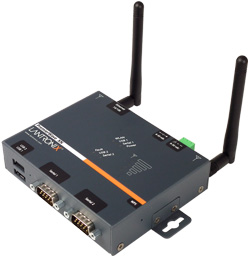Astronomy is the study of celestial objects, phenomena, and origins.
One of the oldest sciences, astronomy has been practiced since
prehistoric times. Modern astronomy depends highly on accepted physical
theories, such as Newton's Laws of Motion and general relativity.
In the past, astronomy was something anyone could do, and many seers
and sages made reputations for themselves by using the stars for useful
functions, such as telling what time of the year it is, or navigating
the seas. Columbus and his contemporaries used the stars to navigate
across the Atlantic ocean.
It wasn't until the Renaissance
that the theory of heliocentricity in astronomy, the idea that the
Earth orbits the Sun rather than vice versa, began to acquire popular
currency. Reflecting telescopes were invented in the early 1600s, and Galileo
Galilei used them to take detailed observations of our Moon, which he
revealed was mountainous, and observe Jupiter's four largest moons, now
named the Galilean moons
in his honor. Newton improved on Galileo's design, inventing the
reflecting telescope, which is still used in optical telescopes to this
day.
IN 1781, Sir William Herschel discovered the planet Uranus. In 1838,
parallax — the slight difference in stellar position due to Earth's
location in its orbit — was used to precisely determine the distance of
stars. Neptune was discovered shortly thereafter. Pluto was discovered
only as recently as 1930.
Modern astronomy is very complicated and expensive. Instead of only observing light rays, we observe radar, infrared, x-rays, and even cosmic rays.
Orbital observatories such as the Hubble Space Telescope have produced
the best images, include extremely high-resolution photographs of other
galaxies.
In the mid-20th century, it was discovered that the universe was
expanding. This, along with other evidence, led to the theory of the
Big Bang, that the entire universe began as a point particle of extreme
density. Later observations of the cosmic microwave background
confirmed this, and the Big Bang continues as the primary theory of
cosmological origins to this day.
The future of astronomy lies in the development of new observational
technologies. One of interest is interferometry, sometimes called "hypertelescopes,"
which use a network of telescopes working cooperatively to resolve
images. These could develop to the point where we can observe
extrasolar planets with telescopes directly, instead of just detecting
them from their gravitational signature.
Just Hit The Share Button It Doesn't Bite Your Finger
Subscribe to:
Post Comments (Atom)
-
Subtotal (Functions) The Subtotal function allows you to set up a calculation in your worksheet. Then, by filtering the data, the same...
-
Printing Options for Specific Pages You may not always want to print your entire Word document. There are times when you may want to p...
-
Aptoide is an open source approach to repositories in Android . With Aptoide you can create your own repositories of applic...

No comments:
Post a Comment